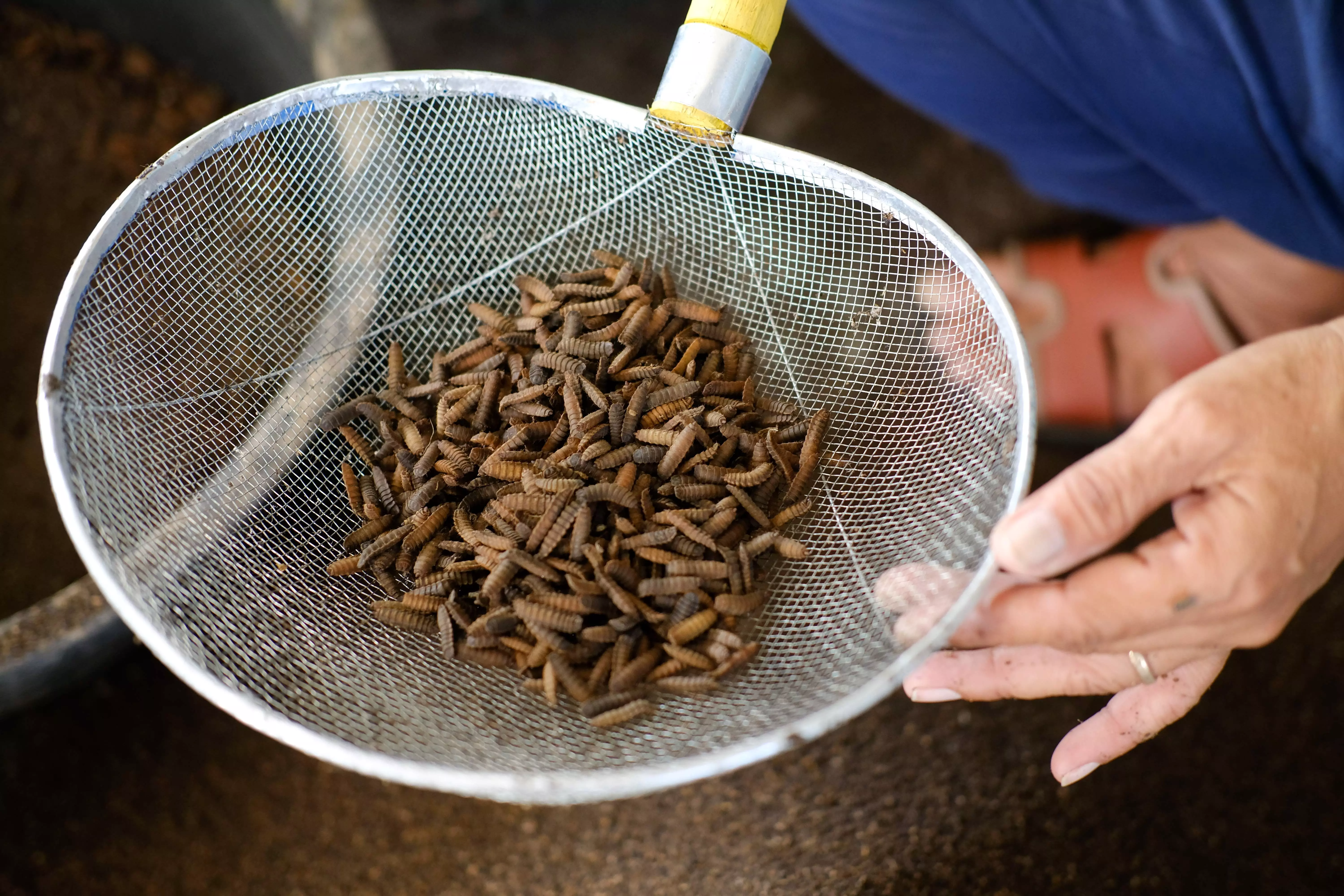Insect dry feeding
Dry feed is great for insects too
Some insects require a high proportion of dry matter in their feed. The dry feeding systems developed by TEWE are technically innovative with a high degree of automation, which makes work easier and enables precise feeding.
TEWE’s dry feeding systems consist of multiple main components:
- batch mixer
- weighing technology
- feed machine
- precise microdosing unit for automatic dispensing of precisely calculated batches at the filling station
- deflection corners
- control
TEWE supplements the mechanical technology with high-performance, integrated control technology that can be combined with a standardised PLC control system for robot and sequence processes. The technology meets all essential hygiene standards.
In conclusion
TEWE’s dry feeding systems are an innovative, durable and hygienic solution for insect breeding. Thanks to their high degree of automation, precise dosing and compliance with strict hygiene standards, they help make insect fattening more efficient and sustainable. These features and benefits make TEWE systems an ideal choice for professional insect breeders.

Benefits
- Powerful and durable:
- The systems are powerful and durable, which guarantees reliability and a long service life.
- The high degree of automation makes work easier and increases efficiency.
- Easy operation and maintenance:
- The systems are easy to operation and maintain, which minimises operational workload.
- Daily automatic mixing and blending of feed saves time and labour.
- Precise and efficient:
- High dosing precision ensures precise feeding.
- Automatically adjusting feed quantity to the needs of insects increases efficiency.
- Hygiene and food safety:
- A high standard of hygiene ensures compliance with all essential hygiene regulations.
- Optimal storage and handling delay the expiration of the feed.
- Economical:
- Great value for money with high quality at a fair price.
- Precise dosing and automatic feed quantity adjustment enable better planning of purchasing.
Features
Automation and control:
- PLC control: Can be combined with robotic and sequential processes for end-to-end automation.
- Can bus technology minimises cabling work and makes operation easier.
- Automatic adjustment: The feed quantity is automatically adjusted to the needs of the insects to prevent overfeeding and feed waste.
Precise dosing:
- Microdosing unit: Ensures precise calculation and dispensing of feed batches.
- Weighing technology: Enables precise measurement of quantities for feed preparation.
Hygiene standards:
- Hygienic construction: All components are designed to be easy to clean and maintain in order to ensure excellent hygiene.
Efficient use:
- Longer shelf life: Optimised storage and handling delay the expiration of the feed.
- Better planning of purchasing: Precise dosing and feed quantity adjustment enable better planning of feed requirements.
Good to know
Sustainability:
- Dry feeding can help reduce food waste by using organic waste products from agriculture and industry.
Feed optimisation:
- Precise control and dosing enable targeted optimisation of feed composition to improve the productivity and quality of the insects.
Diversity of feed sources:
- Various dry feedstuffs, such as cereal, fruit and vegetable waste, can be used to feed insects sustainably and inexpensively.
References




